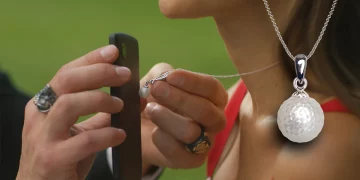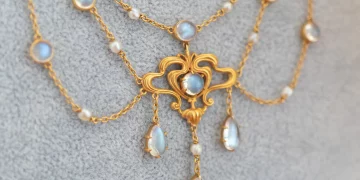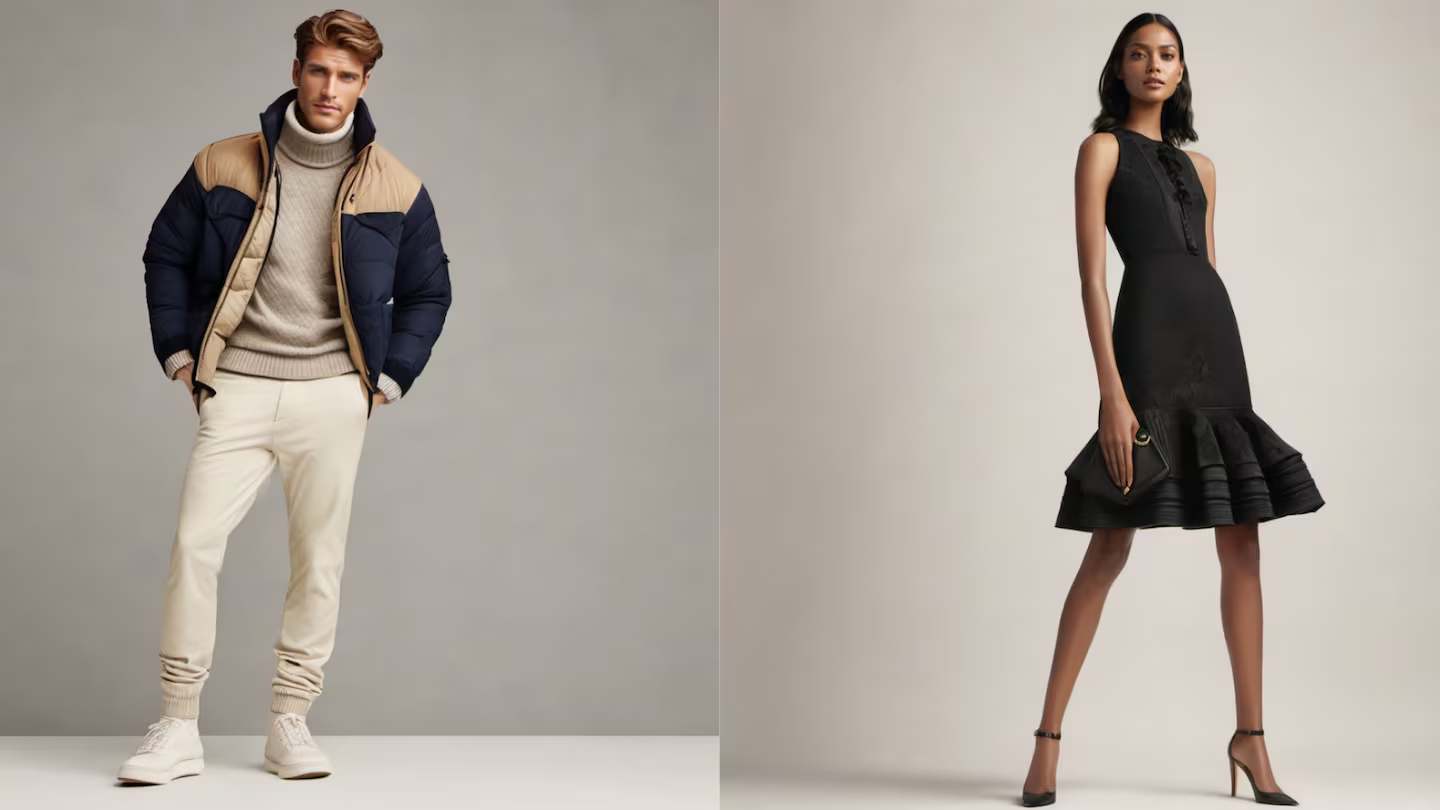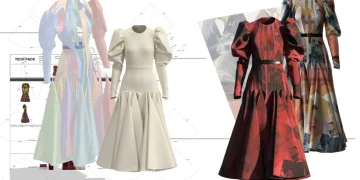Luxury jewelry has long been a symbol of status, wealth, and refined taste. Its intrinsic appeal has remained largely unaffected by economic fluctuations, with collectors and investors alike continuing to cherish high-end pieces for their timeless value and exclusivity. However, as we navigate the complexities of a rapidly evolving global economy, many wonder whether luxury jewelry can continue to maintain its position as the epitome of opulence and exclusivity.
In this article, we’ll explore the question: Can luxury jewelry maintain its allure in the face of shifting economic landscapes? We’ll examine the resilience of the high-end jewelry market, the influence of changing consumer behaviors, and the role of economic uncertainty in shaping future trends.
1. The Enduring Appeal of Luxury Jewelry: More Than Just a Commodity
Luxury jewelry has always represented more than just a material possession. It symbolizes heritage, prestige, and lasting value—qualities that have elevated it beyond mere decoration. But in times of economic turbulence, one might wonder whether this high-status market can continue to thrive.
1.1 Jewelry as an Investment: The Enduring Value Proposition
In periods of economic uncertainty, assets that retain their intrinsic value become even more attractive. For wealthy buyers, luxury jewelry has long been seen as a store of value, much like fine art or precious metals. As inflation and stock market volatility push people to diversify their portfolios, high-quality jewelry—especially pieces with historical significance or rare gemstones—has proven to be a sound investment.
The resale market for luxury jewelry has become increasingly lucrative, with certain vintage pieces seeing incredible price appreciation over time. For example, watches from renowned brands like Patek Philippe or Rolex, as well as diamonds and high-end vintage jewelry, have consistently outperformed other asset classes. This investment potential, paired with the tangible beauty and unique craftsmanship of luxury jewelry, ensures that it remains a safe haven in uncertain times.
1.2 The Role of Exclusivity and Heritage
Luxury jewelry’s connection to heritage and exclusivity gives it an enduring appeal, particularly during periods of economic instability. In an era when many commodities are easily accessible, owning an exclusive piece of jewelry from a brand like Cartier, Tiffany & Co., or Bvlgari provides not only financial value but also cultural capital.
The storytelling aspect of jewelry plays a critical role in its appeal. Heritage brands are able to offer more than just a piece of jewelry; they provide an experience—a connection to centuries of craftsmanship, art, and tradition. This aspect of luxury jewelry, tied to history and artisanal expertise, helps maintain its position as a symbol of distinction even when economic conditions fluctuate.
2. How Economic Shifts Influence Luxury Jewelry Buying Behavior
The luxury jewelry market has proven to be resilient in the face of economic challenges, but the consumer behavior surrounding it is constantly evolving. Understanding the shifting dynamics of wealth distribution, consumer values, and digital transformation is key to predicting whether luxury jewelry can continue to thrive in the future.
2.1 The Growing Influence of Emerging Markets
As global wealth increasingly shifts toward Asia, Africa, and the Middle East, luxury jewelry brands are beginning to see new markets emerge as primary sources of demand. China and India, for instance, have become major drivers of growth in the luxury goods sector, with the rising middle class and the increasing number of billionaires creating a surge in demand for high-end products, including jewelry.
In the Middle East, especially countries like the UAE and Saudi Arabia, the demand for luxury goods—including jewelry—is soaring, largely driven by oil wealth and an increasing appetite for exclusive, custom-made pieces. These regions place immense importance on opulence and status, ensuring that luxury jewelry continues to be an essential part of social and cultural expression.
While economic conditions in Western markets may fluctuate, emerging markets will play an increasingly important role in maintaining the growth and exclusivity of the luxury jewelry sector.
2.2 The Rise of Younger Consumers: Shifting Priorities
In recent years, younger generations have begun to shift their purchasing priorities—luxury jewelry included. While millennials and Gen Z consumers still value luxury, their priorities often include elements like sustainability, ethical sourcing, and personalization.
For example, many younger buyers are drawn to lab-grown diamonds as a more sustainable and ethical alternative to mined diamonds. They are also increasingly interested in unique, custom-made pieces that reflect their individuality, rather than traditional designs. As the luxury jewelry market adapts to these changing preferences, it is likely to embrace eco-conscious and technologically integrated jewelry that aligns with the values of this next generation of buyers.
2.3 Digital Disruption: The Future of Online Jewelry Sales
As e-commerce continues to expand across all industries, luxury jewelry brands must also evolve to maintain their appeal. In the past, luxury jewelry was predominantly sold through physical boutiques and at exclusive events, where the experience was part of the allure. However, the rise of digital retail platforms has opened up new avenues for jewelry sales, especially among younger, more tech-savvy consumers.
2025 will likely see virtual try-ons, 3D visualization tools, and enhanced online customization options transforming the way consumers shop for high-end jewelry. Luxury brands will need to offer a seamless digital experience while preserving the exclusivity and prestige that have traditionally defined the sector. Social media, especially platforms like Instagram and TikTok, will continue to play a significant role in shaping trends and driving sales, with influencers and celebrities contributing to the growing demand for specific luxury pieces.

3. Can Luxury Jewelry Overcome the Impact of Economic Downturns?
Luxury jewelry’s resilience in the face of economic downturns has been a testament to its ability to withstand economic cycles. However, global recessions, inflation, and geopolitical crises inevitably create uncertainty that can affect consumer behavior.
3.1 The Impact of Recessions and Inflation on High-End Purchases
While recessions may slow down demand for mass-market luxury goods, high-end jewelry often proves to be recession-proof. This is because the target consumer for luxury jewelry tends to have a high disposable income, meaning that even during times of financial difficulty, they are still able to indulge in luxury purchases. Furthermore, luxury jewelry is often seen as a long-term investment, allowing it to retain its appeal even when other assets underperform.
3.2 The Impact of Geopolitical Uncertainty
On a global scale, geopolitical uncertainty—such as trade wars, tariffs, and political instability—can impact the price of raw materials (gold, diamonds, etc.), as well as disrupt supply chains. However, the high-net-worth individuals who are the primary consumers of luxury jewelry are often less affected by these external factors. Moreover, the scarcity of rare gemstones or limited edition pieces during times of instability can actually drive up demand, as consumers seek to acquire something unique and exclusive before it becomes even rarer.
4. The Future of Luxury Jewelry: Staying Relevant and Adaptable
The question remains: can luxury jewelry continue to maintain its allure in an era of economic uncertainty, changing consumer behaviors, and technological innovation? The answer seems to be a resounding yes—but only if brands stay relevant and adaptable.
4.1 Staying Relevant in a Digital-First World
As younger consumers demand greater personalization, ethical sourcing, and accessibility in their luxury purchases, brands must adjust to meet these needs. Technology will play a major role in shaping the future of the jewelry industry, with innovations like blockchain for transparency, virtual jewelry try-ons, and online customization driving future sales.
4.2 Embracing Sustainability Without Compromising Craftsmanship
Sustainability is no longer a passing trend—it’s a requirement for brands wishing to maintain their position at the top of the market. Luxury jewelry houses will need to incorporate sustainable practices without compromising on the artisanal craftsmanship that defines their legacy. Eco-conscious materials, lab-grown diamonds, and transparent supply chains will need to be integrated into luxury jewelry lines to meet consumer demand for products that align with their values.
Conclusion: Luxury Jewelry’s Resilience in a Changing World
In an ever-evolving economic landscape, the luxury jewelry market remains remarkably resilient, driven by its enduring appeal as an investment and a symbol of exclusivity. Although economic conditions and consumer preferences will continue to evolve, luxury jewelry’s ability to adapt and meet changing demands will ensure its continued relevance. Whether through sustainable practices, personalized designs, or embracing new digital technologies, luxury jewelry is poised to maintain its unique allure—proving that in times of economic change, true luxury is timeless.

















































